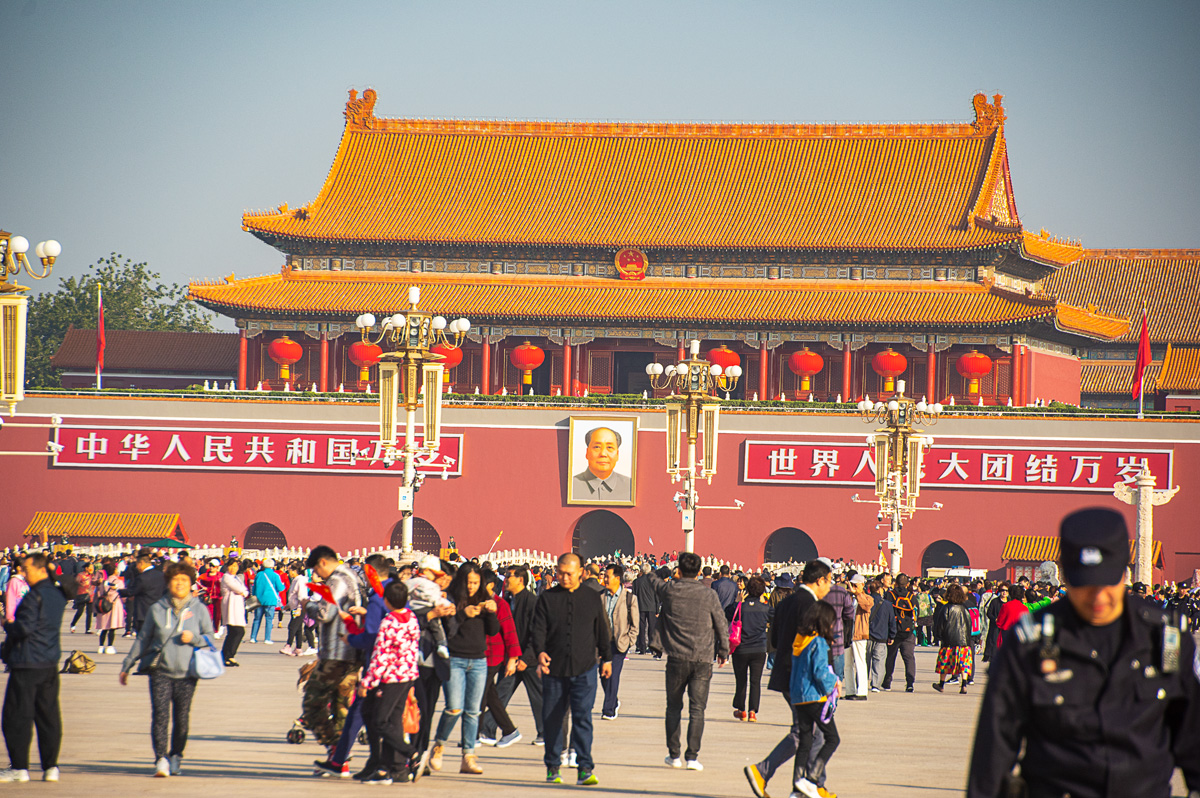No. 41. Tiananmen Square
As noted in last week’s post, the people of China spent a week celebrating the 70th Anniversary of the founding of the People’s Republic of China. The founding of the People’s Republic was declared on October 1, 1949, in Tienanmen Square. It is one of the ten largest in the world. (There are three larger city squares in China.) I was there on the final day of the celebration as workers began tearing down the special seating put up for dignitaries to view the official speechifying, military parade, and festive parade.
The square was still mobbed by throngs of Chinese tourists who came out to mark the patriotic holiday. Here is a small sampling of Photos. The Square was originally constructed in 1651, but quadrupled in size during the 1950s. The Great Hall of the People on one side is the parliament building where nearly the 3,000 legislators meet once a year for 10 to 14 days. A standing committee of around 170 is in permanent session and does most of the real work. Members of the National People’s Congress are not directly elected by popular vote, rather by a tiered representative system that, as it was explained to us, smacks of a meritocratic selection process. The NPC is often described as a rubber-stamping body for decisions reached by the Standing Committee and the Communist Party. In recent years several measures proposed by those bodies have been rejected, showing signs of somewhat greater independence.
The building also houses a banquet room, which can host 5,000 people. It was constructed in eight months. The monument to Heros of the People in front took much longer to construct as there were lengthy and heated debates about its design to assure Feng Sui.
Our Chinese guide did make note of the site of the June 4th (1989) Massacre in the square. He said that today there is greater freedom of speech. The greatest limitations are on separatist movements. China was Balkanized during the 19th Century by European invaders; the (as yet incomplete) reunification of China is viewed as the major accomplishment. Around 85 different ethnic groups live in China. I leave to another day a fuller discussion of what might be euphemistically called “the finer points” of democratic rights, bureaucratic abuse, and national unity.











